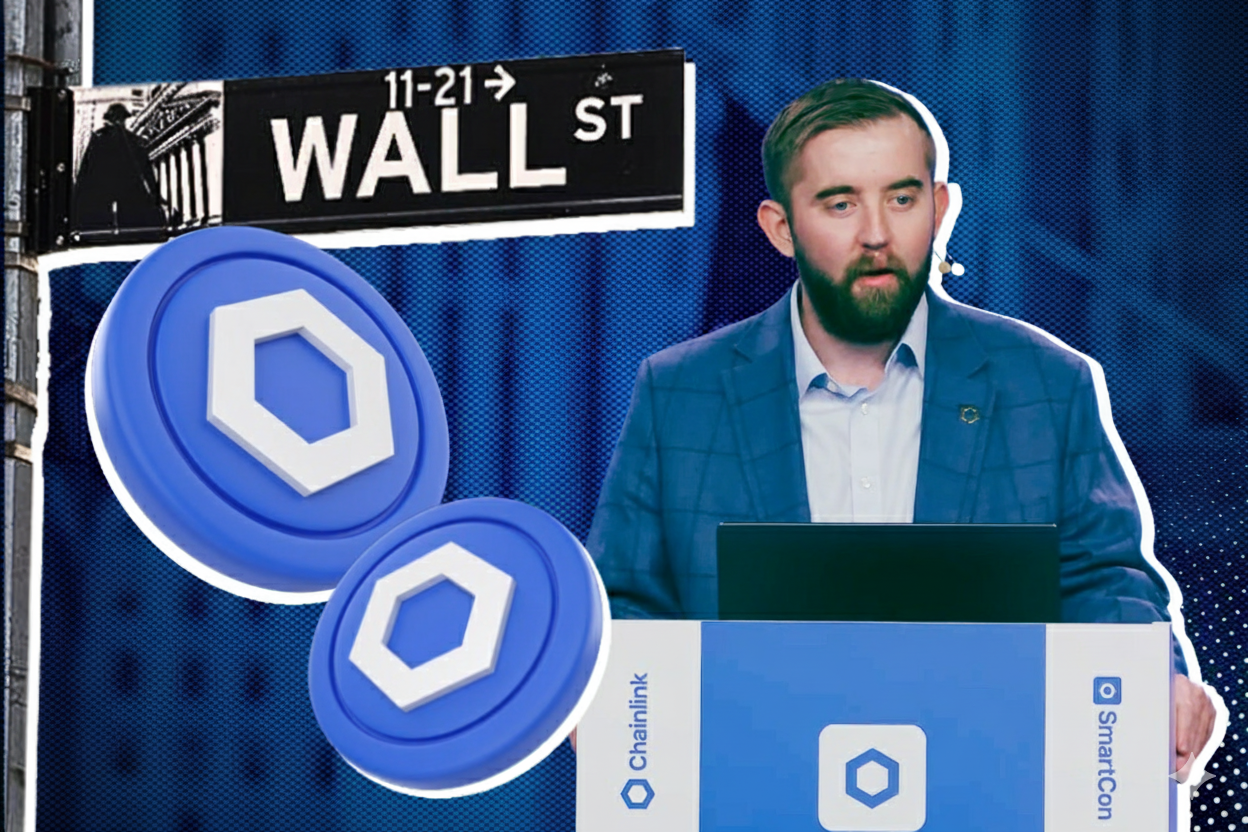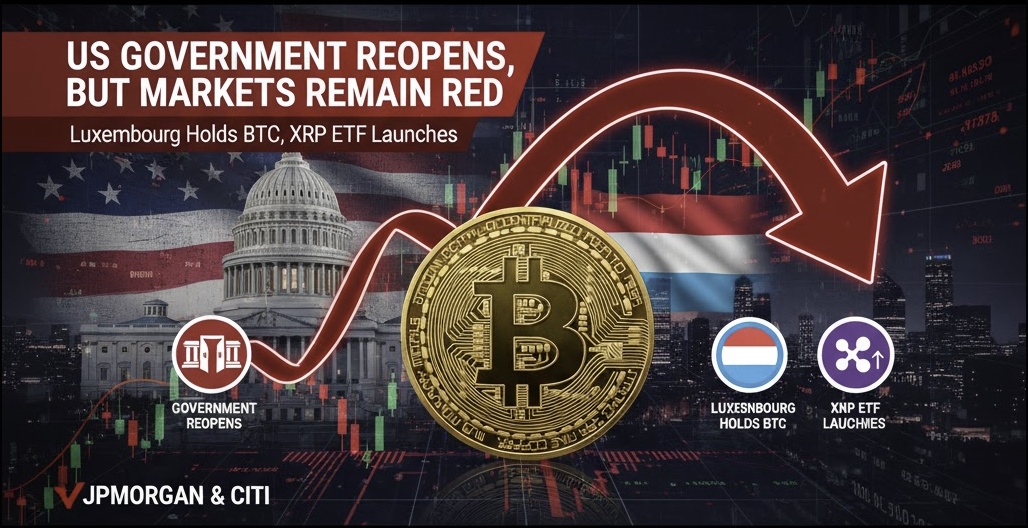The US government has announced a temporary shutdown after the two parties failed to agree on a budget. Bitcoin is trading sideways, and crypto is receiving more positive news regarding policies from the SEC.
Market Overview
US equities continued their upward trend on Tuesday (September 30th, US), with all three indices rising, and the S&P 500 gaining the most at 0.41%. Stock futures traded sideways or saw slight increases. Gold continued to climb to $3881 per ounce. Oil was at $62.5 per barrel.
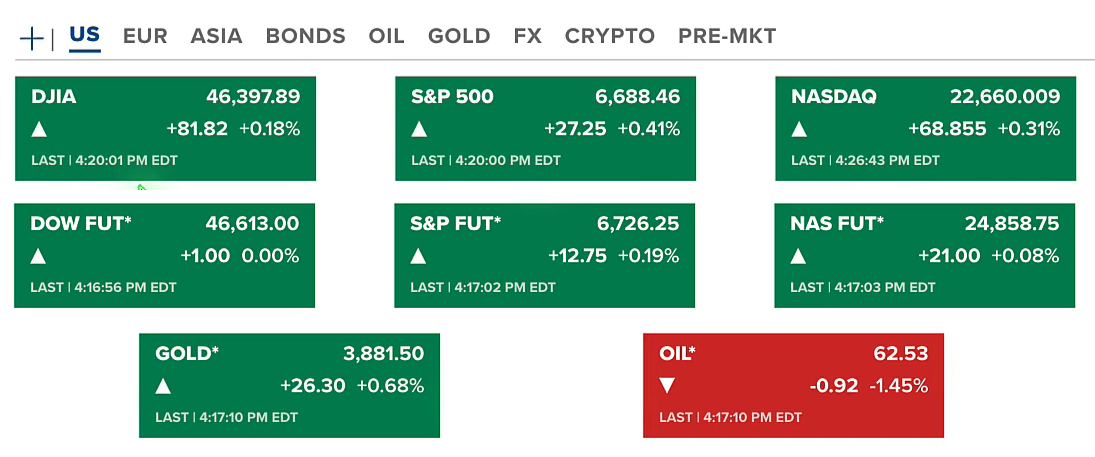
Bitcoin fluctuated throughout the day but held steady around $114,000. Major altcoins traded sideways or saw slight declines. The overall crypto market capitalization is at $4 trillion.
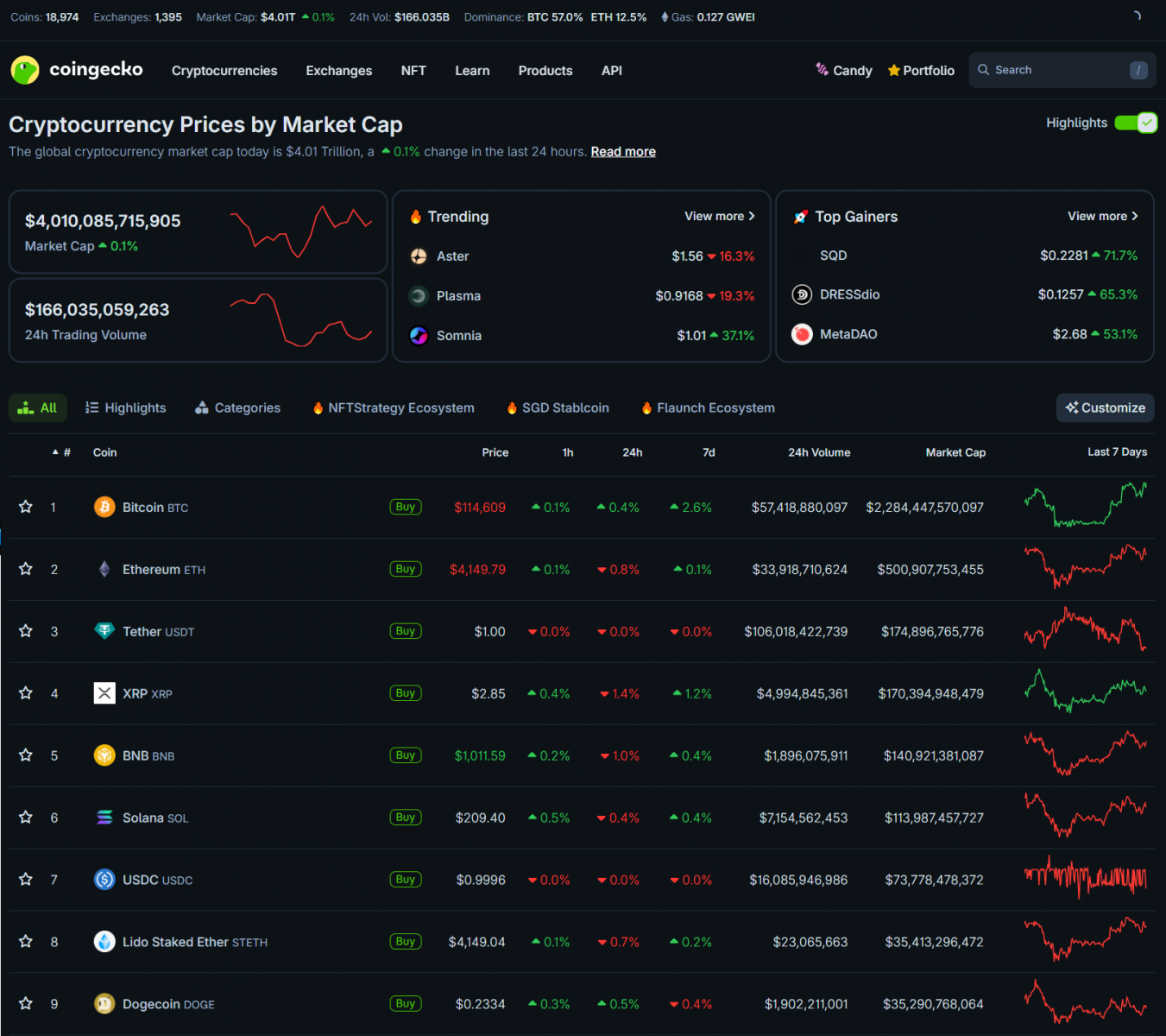
US BTC spot ETFs continued to see inflows on Tuesday, totaling $429.9 million. ETH spot ETFs also saw $127.5 million in inflows. Similarly, SOL continued to see $18.3 million in positive flows.

September is typically a "bearish" month for Bitcoin, but this year, it recorded a gain of about 5%, marking the third consecutive September with growth. Although Bitcoin saw a slight correction of about 6.5% in August, it has maintained a high level and continues to lead the market. If Bitcoin were to decline sharply, the chance of an "altcoin season" would be very low.
Historically, the period from October to December is often a strong growth phase for BTC, which can sometimes be followed by a "crypto winter." However, this cycle may be extended because the Fed has not yet significantly loosened monetary policy, having only implemented a 0.25% interest rate cut. When the Fed begins pumping money back into the system, capital could flood into Bitcoin, crypto, and stocks, prolonging the upward cycle. Some new perspectives suggest that Bitcoin is entering a maturity phase and may no longer experience traditional "winter cycles," instead aligning with the broader financial market cycle.
The US Government Shutdown: History and Impact
The US government was on the verge of a shutdown after midnight as Congress remained deadlocked over the budget. The Democratic Party sought to reverse Medicaid cuts, while the Republican Party insisted on a "continuing resolution," a short-term funding bill that keeps the government operating at current spending levels without adding any new policy provisions. Late on Tuesday in the US, budget discussions failed, and the US government officially shut down after the two parties could not reach a temporary budget agreement.
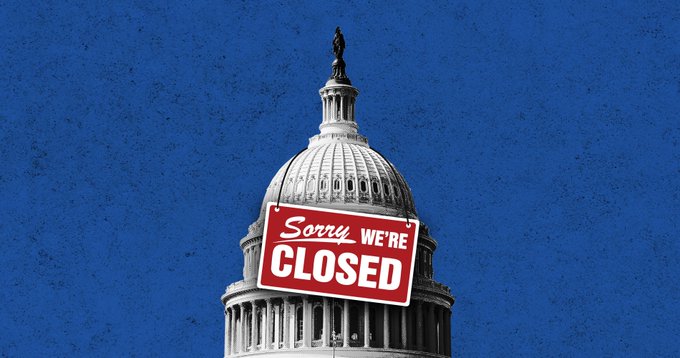
The Democratic Party, led by Chuck Schumer and Hakeem Jeffries, was adamant about extending Obamacare tax subsidies, causing both parties' budget proposals to fail in the Senate. The shutdown could last from a few hours to several weeks.
History and Effects of a US Government Shutdown
How many times has the US government shut down? Since 1976, there have been 21 instances where the US government had to shut down. The duration has ranged from just a few hours to a record 35 days, from December 22, 2018, to January 25, 2019. This was the longest shutdown in US history, stemming from a disagreement between President Trump and Congress over funding for the US–Mexico border wall. This time, both sides seem determined to let the shutdown happen. Democrats may believe they are protecting constituents by maintaining health programs, while President Trump might argue that the Democratic Party is promoting wasteful spending, which is the cause of the shutdown.
What is the impact? If the government shuts down, approximately 3.4 million federal employees will be affected, including civilian and military personnel. Around 900,000 "non-essential" employees will be temporarily furloughed and not paid. However, by law, they are guaranteed to receive full back pay once the government reopens. For example, after the 2018–2019 shutdown, approximately 800,000 employees were fully compensated despite not working. Congress passed a law requiring full back pay for all federal employees affected by a shutdown. The 2018–2019 shutdown alone cost taxpayers $5–$10 billion due to lost productivity and back pay for non-working personnel. About 2.5 million "essential" employees, such as military personnel, TSA agents, border patrol, and air traffic controllers, will still have to work without pay until the budget is approved. However, President Trump has threatened mass layoffs if the shutdown is not prevented. This means there may be no temporary furloughs and potentially no back pay for many, making the impact of this shutdown more severe. Many see this as a continuation of the DOGE (Department of Government Efficiency) initiative under Trump, which promoted cost-cutting, restructuring, and workforce reduction.
What happens to the economy? A shutdown also directly affects the economy. Furloughed employees will spend less at restaurants, gas stations, and stores. Government contractors often do not get reimbursed, meaning small businesses dependent on these contracts may lose revenue permanently. Public services like FHA mortgage processing, SBA small business loans, and food assistance will be delayed. The aviation industry could also face chaos as TSA and air traffic controllers work without pay, potentially calling in sick. Economists estimate that for every week the government shuts down, US GDP growth is reduced by about 0.1 to 0.2%. The 2018–2019 shutdown alone caused a 0.3% drop in GDP in Q1 2019 before recovering.
What happens to the financial market? Historically, the stock market has rarely reacted negatively to government shutdowns. Investors often view it as "political theatre" rather than a systemic risk because the government continues to pay its debts, and there is no risk of default. According to an analysis by Edward Jones of shutdowns since 1976:
- During the shutdown: The S&P 500's average return is 0.0% (50% positive, 50% negative).
- Three months later: The average return is +2.6% (60% positive, 40% negative).
- Six months later: The average return is +7.5% (70% positive, 30% negative).
- In the 12 months following shutdowns since 1980, the S&P 500 increased by an average of +16.95%.
During the 35-day shutdown at the end of 2018, the S&P 500 rose about 10–12%, but this was a recovery from a sharp decline just before the shutdown began. Bitcoin's reaction was different. On December 22, 2018, the Bitcoin price was around $4,000. By January 25, 2019, when the government reopened, the price had fallen to about $3,500, a loss of about 12.5%. Note that this was during the 2018 "crypto winter," when the entire market was collapsing after the late 2017 bubble.
In summary: Investors generally view the shutdown as a temporary political battle that will soon be resolved. The US continues to pay its debt on time, so there is no risk of default, which reassures the market. Corporate earnings, interest rates, and economic growth are much more important to stocks in the long run than short-term budget disputes. Sometimes, a shutdown even slows down new regulations, which the market views as a short-term benefit for businesses. Therefore, many traders view any dips during a shutdown as a buying opportunity, helping the market recover and even rally during the shutdown period itself. While a government shutdown may cause short-term disruptions and instability, the financial market, especially the stock market, typically ignores the political noise and continues to follow larger economic trends.
SEC's Pro-Crypto Policies and the Tokenization Wave
SEC Clears Path for Altcoin ETFs
The US Securities and Exchange Commission (SEC) is preparing a series of regulatory changes to clear the way for stocks to be traded directly on the blockchain, a major turning point for the US financial market. Exchanges like Coinbase and Robinhood are actively lobbying for this process to be implemented quickly, while the New York Stock Exchange (NYSE) has also met with the SEC's Crypto Task Force to discuss the details of stock tokenization.
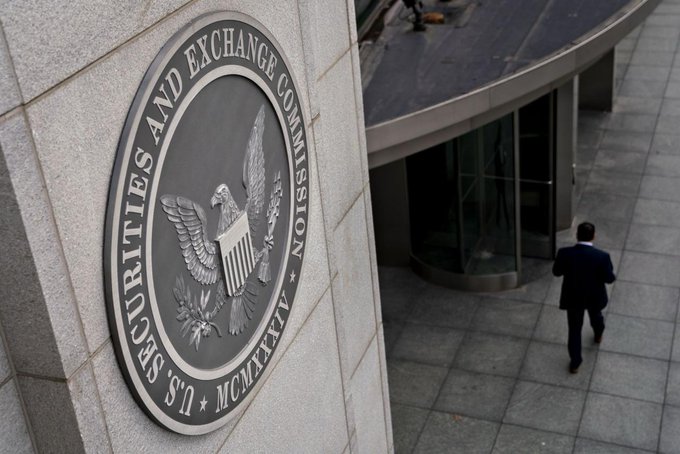
At the joint workshop between the SEC and the Commodity Futures Trading Commission (CFTC), former SEC Chairman Paul Atkins called this a "historical turning point," noting that the two agencies, which have often been at odds, are now cooperating closely to promote technological innovation in the financial system.
Concurrently, Cronos, the blockchain backed by Crypto.com, is partnering with Amazon Web Services (AWS) to accelerate the tokenization of Real-World Assets (RWAs) such as real estate, securities, and gold. By integrating data with AWS's cloud infrastructure, businesses and developers can build more secure and efficient blockchain applications. Cronos aims to reach $10 billion in tokenized asset value and attract 20 million users by 2026. Additionally, AWS will provide up to $100,000 in credits for developers testing projects related to tokenization, DeFi, and AI, affirming that this collaboration ensures legal and security factors, making it easier for banks and financial institutions to participate.
In another development, the SEC announced it will not consider tokens following the DePIN (Decentralized Physical Infrastructure Networks) model as securities. A typical case is the 2Z token of the DoubleZero project, where the token's value is derived from providing real-world infrastructure services rather than the expectation of profit from others' efforts. The SEC argues that applying securities laws to this model would stifle the development of decentralized networks, while emphasizing that DePIN tokens only serve as rewards for work or services, not investment vehicles.
Finally, according to expert Eric Balchunas of Bloomberg, the likelihood of a Solana ETF being approved by the SEC in the US has reached almost 100%. The application of new unified listing standards means that the 19b-4 filing process and waiting period are no longer critical, and the final step is only the approval of the S-1 document, which details the fund's structure, risks, fees, and objectives. Once this document is approved, the Solana ETF will officially launch.
Tokenization and Blockchain Integration
Coinbase has provided over $1 billion in Bitcoin-collateralized loans and plans to increase the maximum loan limit to $5 million per customer. The asset-backed lending market is forecasted to reach $1.3 trillion by 2030. The SEC is preparing a plan to allow stocks to be traded on the blockchain, a major shift for the US financial market. The SEC is drafting regulatory changes that could allow tokenized stocks to begin trading soon. Coinbase and Robinhood are lobbying for quick implementation. Even the NYSE, the world's largest stock exchange, has met with the SEC's Crypto Task Force to discuss tokenized stocks. At the joint SEC and CFTC workshop, former SEC Chairman Paul Atkins called this a "historic turning point for the US financial market," emphasizing the two agencies are cooperating closely after years of frequent conflict.
Massachusetts is considering establishing a Strategic Bitcoin Reserve (SBR) under Senate Bill S.1967 proposed by Senator Peter Durant. A hearing will take place on October 7th, chaired by the Joint Committee on Revenue. If passed, the state would become the first Democratic-led state to officially consider holding Bitcoin as a hedge against inflation and a tool for asset diversification. Currently, several other states like Texas and Utah have approved Bitcoin funds, and Wyoming allows investing up to 3% of state funds into the asset.
Tether recently purchased an additional 8,888 BTC, increasing its total Bitcoin holdings on-chain to 86,335 BTC. However, the company states the actual total is over 100,000 BTC, along with 50 tons of gold and an investment in the Bitcoin treasury company XXI, which holds over 15,000 BTC. Beyond crypto, Tether also owns a 70% stake in Adecoagro, a South American agricultural conglomerate managing over 210,000 hectares of land in Argentina, Brazil, and Uruguay.
French investment firm Melanion Capital is raising 50 million euros ($58.5 million) to launch the first Bitcoin treasury model for private businesses in Europe, with the goal of investing all capital in Bitcoin and setting a precedent for other companies to integrate digital assets into their balance sheets.
Kazakhstan launched the Alem Crypto Fund, a state-backed crypto reserve fund in partnership with Binance Kazakhstan, starting by purchasing BNB as a long-term reserve asset. The fund's goal is to build strategic reserves and invest long-term in crypto. This move follows the country's issuance of the tenge-pegged KZTE stablecoin on the Solana network and its preparation to launch CryptoCity in 2025, a zone that will allow crypto payments and the development of a comprehensive digital asset ecosystem.
Visa is testing a feature that allows businesses to use stablecoins for cross-border payments via Visa Direct, which reduces the need to hold cash for several days before a transaction is completed. Businesses can deposit stablecoins as an available balance, enabling faster and more flexible international transfers compared to traditional systems.
Vanguard, the world's second-largest fund company, commented on recent news that they might allow Bitcoin and Crypto ETFs on their platform. They neither confirmed nor denied the rumors, maintaining their usual cautious stance.
Sources
- The New York Times
- Fox Business
- Bloomberg
- SEC
- CFTC Official Announcements
- Tether Transparency Report
- Coinbase Official Announcements
- NYSE
- Cronos Official Announcements
- AWS
- Solana Official Announcements
- Tether Official Announcements
- Melanion Capital
- Kazakhstan National Bank
- Visa Official Announcements
- Vanguard Public Statements
Disclaimer
This article is for informational purposes only and should not be considered financial advice. Please do your own research before making investment decisions.


.png)



